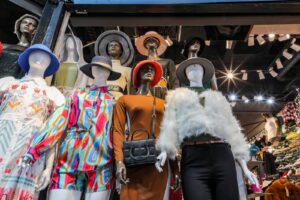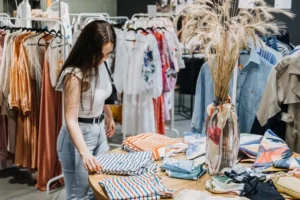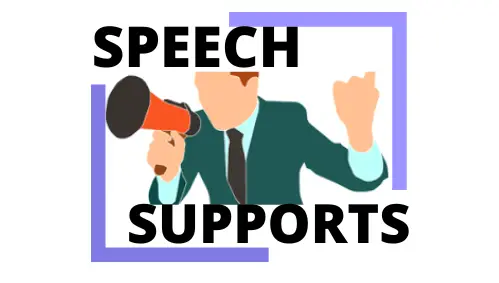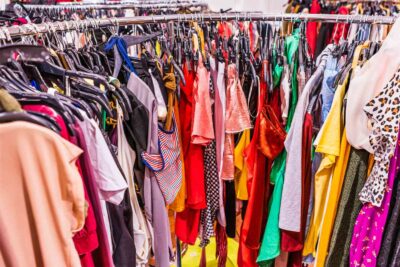Addressing controversial fashion topics requires a multifaceted approach that involves various stakeholders within the fashion industry and beyond. Here are some ways to address these issues:
- Education and Awareness: Increase awareness and understanding of controversial fashion topics among industry professionals, consumers, and the general public. Education about cultural sensitivity, sustainable practices, labor rights, and diversity can help promote informed decision-making and responsible behavior.
- Dialogue and Collaboration: Foster open dialogue and collaboration among fashion designers, brands, activists, policymakers, and other stakeholders. Encourage constructive discussions about controversial topics to identify common goals, share perspectives, and develop solutions collaboratively.
- Transparency and Accountability: Promote transparency and accountability within the fashion industry by encouraging brands to disclose information about their supply chains, labor practices, environmental impact, and cultural inspirations. Hold brands accountable for their actions and commitments through public scrutiny, consumer activism, and industry standards.
- Regulation and Policy: Advocate for stronger regulations and policies to address controversial fashion issues, such as labor rights, environmental sustainability, animal welfare, and cultural appropriation. Support legislative efforts to enforce ethical standards, improve working conditions, and protect vulnerable communities within the fashion supply chain.
- Innovation and Technology: Invest in research, innovation, and technology to develop sustainable materials, production methods, and business models that minimize environmental impact and promote ethical practices in fashion. Encourage the adoption of innovative solutions, such as eco-friendly fabrics, zero-waste manufacturing, and circular fashion initiatives.
- Representation and Inclusion: Promote diversity, representation, and inclusivity in fashion by celebrating a wide range of body types, racial and ethnic backgrounds, gender identities, and cultural perspectives. Support initiatives that empower underrepresented communities and challenge stereotypes within the fashion industry.
- Consumer Empowerment: Empower consumers to make informed and ethical choices about fashion by providing access to information, resources, and alternative options. Encourage conscious consumerism through campaigns, labels, certifications, and ethical fashion platforms that highlight sustainable and socially responsible brands.
- Creative Expression and Freedom: Respect creative expression and freedom in fashion while also considering the impact of controversial designs, themes, and imagery. Encourage designers to push boundaries, challenge norms, and provoke thought while being mindful of cultural sensitivity, social responsibility, and ethical considerations.
By addressing controversial fashion topics through these strategies, the industry can work towards a more inclusive, sustainable, and ethically responsible future for fashion.
100 Controversial fashion topics

Here’s a list of 100 controversial fashion topics:
- Cultural appropriation in fashion
- Size inclusivity in the fashion industry
- Sustainability in fashion production
- Fur and animal skin use in fashion
- Gender-neutral clothing and fashion
- Fast fashion’s impact on the environment
- Representation of diversity in fashion campaigns
- Labor exploitation in garment factories
- Body image and unhealthy beauty standards in fashion
- Cultural stereotypes perpetuated by fashion
- Transparency in fashion supply chains
- Fashion’s contribution to plastic pollution
- Accessibility of high fashion for all socioeconomic groups
- Use of underage models in fashion shows
- Counterfeit fashion products and intellectual property rights
- Impact of social media on fashion trends
- Ethical sourcing of materials in fashion
- Lack of racial diversity on fashion runways
- Fashion’s role in promoting consumerism
- Impact of fashion on mental health
- Overproduction and waste in the fashion industry
- Appropriation of Indigenous culture in fashion
- Representation of disability in fashion
- Pressure on models to maintain unrealistic body standards
- Exploitative marketing tactics in fashion
- Fetishization of certain cultures in fashion
- Gendered pricing disparities in fashion
- Impact of fashion industry on global water resources
- Role of fashion in perpetuating class divisions
- Fashion’s role in promoting Western beauty standards globally
- Lack of size diversity in fashion media and advertising
- Environmental impact of textile dyeing and printing
- Use of unpaid internships in the fashion industry
- Lack of diversity in fashion design schools
- Fashion’s role in gentrification of neighborhoods
- Fashion’s representation of LGBTQ+ communities
- Greenwashing in the fashion industry
- Discrimination against older models in fashion
- Cultural insensitivity in fashion editorials and campaigns
- Impact of fashion industry on indigenous communities’ traditional craftsmanship
- Exploitation of celebrity endorsements in fashion
- The influence of Western fashion on traditional dress
- Role of fashion in promoting unhealthy dieting behaviors
- Fashion’s role in perpetuating gender stereotypes
- Representation of mental health issues in fashion
- Role of fashion in perpetuating racism
- Role of fashion influencers in promoting sustainability
- Fashion’s role in promoting unrealistic relationship ideals
- Use of airbrushing and digital manipulation in fashion photography
- Representation of religious symbols in fashion
- Fashion’s role in promoting colonial attitudes
- Lack of diversity in fashion leadership positions
- Fashion’s impact on local economies in developing countries
- Exploitation of fashion trends from marginalized communities
- Impact of fashion industry on biodiversity loss
- Representation of tattoos and body modifications in fashion
- Impact of fashion industry on water pollution
- Representation of menstruation in fashion
- Fashion’s role in promoting cultural assimilation
- Impact of fashion industry on indigenous land rights
- Representation of disability aids in fashion campaigns
- Fashion’s role in perpetuating ableism
- Impact of fashion industry on child labor
- Representation of socio-political issues in fashion
- Role of fashion in promoting consumer debt
- Representation of aging in fashion advertising
- Fashion’s impact on food insecurity
- Representation of environmental activism in fashion
- Impact of fashion industry on LGBTQ+ rights
- Role of fashion in promoting gender equality
- Representation of homelessness in fashion campaigns
- Impact of fashion industry on deforestation
- Role of fashion in promoting racial reconciliation
- Representation of mental disabilities in fashion
- Impact of fashion industry on air pollution
- Role of fashion in promoting body positivity
- Representation of reproductive rights in fashion
- Impact of fashion industry on soil degradation
- Role of fashion in promoting ethical consumption
- Representation of religious diversity in fashion
- Impact of fashion industry on climate change
- Role of fashion in promoting cultural exchange
- Representation of refugee communities in fashion
- Impact of fashion industry on marine pollution
- Role of fashion in promoting sustainable agriculture
- Representation of sex workers in fashion
- Impact of fashion industry on biodiversity conservation
- Role of fashion in promoting peacebuilding
- Representation of gender-nonconforming individuals in fashion
- Impact of fashion industry on freshwater ecosystems
- Role of fashion in promoting mental health awareness
- Representation of indigenous rights in fashion
- Impact of fashion industry on wildlife conservation
- Role of fashion in promoting conflict resolution
- Representation of body hair in fashion campaigns
- Impact of fashion industry on renewable energy adoption
- Role of fashion in promoting social justice
- Representation of menstrual hygiene in fashion
- Impact of fashion industry on sustainable transportation
- Role of fashion in promoting cultural preservation
These topics cover a wide range of ethical, social, environmental, and cultural issues that are relevant to the fashion industry.
Conclusion
Controversial fashion topics encompass a wide spectrum of issues that intersect with culture, ethics, and identity. From cultural appropriation and labor exploitation to sustainability and body positivity, these discussions shape the future of the fashion industry. Addressing these topics requires collaboration, transparency, and a commitment to ethical practices.
By engaging in dialogue, promoting diversity, and advocating for change, the fashion industry can work towards a more inclusive and sustainable future. Controversial fashion topics prompt reflection, dialogue, and action, driving progress and innovation within the industry.



